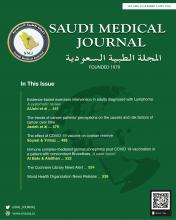Abstract
COVID vaccinations have been an important step in controlling the COVID-19 pandemic. Despite the fact they were generally safe and effective, a few case reports of renal disorders have been published following COVID vaccines. We report a 29-year-old man with history of Chronic Kidney Disease who presented to our center with flank pain after receiving AstraZeneca COVID vaccine. He also had history of raw milk ingestion. His initial investigations showed high creatinine with high level of proteinuria. A renal biopsy was consistent with immune complex-mediated glomerulonephritis on top of renal fibrosis. His brucella serology also showed high titer. He was started on treatment for Brucellosis and planned for follow-up afterwards for further therapy. To the best of our knowledge, this is the first reported case of concomitant Brucellosis and post COVID vaccine glomerulonephritis.
Since Coronavirus disease-19 (COVID-19) was declared a pandemic in 2019, several efforts have been made to control its spread worldwide, including the development of vaccines.
The vaccines developed for COVID 19 are generally safe and effective; however, there have been cases of post vaccine nephropathy. Cases of minimal change disease after administration of messenger ribonucleic acid vaccines were reported.1,2 Cases of pauci-immune glomerulonephritis with positive Anti-Neutrophil Cytoplasmic Antibodies (ANCA) were also reported.3,4 Although temporal association does not always indicate causation, a first-presentation of Class V lupus nephritis was reported in a patient who was previously healthy post AstraZeneca vaccine administration.5 Membranous and IgA nephropathy have been also reported post vaccination.6,7 However, renal injuries following vaccinations were also reported with previous vaccines.8
Brucellosis is considered the most common zoonotic disease and rarely causes renal manifestations, which can carry a poor prognosis.9,10
Here, we report a patient who developed immune complex-mediated glomerulonephritis after receiving the AstraZeneca COVID 19 vaccine with a concomitant Brucellosis.
Case Report
A 29-year-old male presented to our hospital on the 12th of April 2021, with a history of abdominal and loin pain for 5 days, 2 days after receiving the AstraZeneca vaccine for COVID-19. His symptoms included vomiting, diarrhea, and decreased oral intake. He had no history of fever, skin rash, joint pain, photosensitivity, or drug use. The patient had a history of recurrent urinary tract infections, which resulted in long-term impairment of kidney function. However, no medical report or baseline kidney function were available.
Clinical findings
Physical examination revealed no pain or distress; his Glasgow coma scale score was 15/15. His blood pressure was 130/70 mmHg, heart rate was 91 beats per minute, respiratory rate was 12 breaths per minute, oxygen saturation was 99% on room air, and temperature was 37°C. There was no pallor, jaundice, lymphadenopathy, oral ulcers, or arthritis. Chest examination revealed normal vesicular breathing bilaterally. Heart sounds were normal. Abdominal examination revealed mild bilateral flank tenderness; however, no organomegaly was observed. Lower limb examination was unremarkable.
Diagnostic assessment
The laboratories results upon admission can be found in Table 1.
- Initial laboratory results.
Therefore, the patient was admitted with the impression of acute kidney injury. Further laboratory tests after admission are in Table 2.
- Laboratory after admission.
Radiological studies showed
Abdominal computed tomography without contrast showed small non-obstructing right renal stones, bilateral renal cortical scarring, mild splenomegaly and hiatus, and left inguinal hernias (Figure 1).
- Computed temography scan of the abdomen shows bilateral renal atrophy and splenomegaly (blue arrows).
99mTechnetium dimercaptosuccinic acid (DMSA) scan showed a relative renal function of 28% on the right side and 70% on the left side.
The patient was examined by the nephrology team, and their impression was acute kidney injury and a renal biopsy was planned. At the same time, the patient revealed a history of raw milk ingestion, and his Brucella serology came back positive (1:2560). Renal biopsy showed segmental scarring. Strong staining was observed for immunoglobulin M, kappa and lambda light chains, and complement component 1q, confirming immune complex-mediated glomerulonephritis, with segmental scarring. Interstitial fibrosis tubular atrophy of 40% was observed.
Therapeutic intervention
The patient was diagnosed with chronic kidney disease with acute glomerulonephritis and started on doxycycline, ciprofloxacin, and ceftriaxone to treat brucellosis.
Follow-up and outcome
The patient continued to have stable level of serum creatinine with no further deterioration. The decision for immune suppression was delayed till after completing the antibiotics for brucellosis.
Disclosure. Authors have no conflict of interests, and the work was not supported or funded by any drug company.
Discussion
The present case was truly challenging. First, he had a chronic kidney disease. He was also infected with Brucella and received a vaccine, both of which rarely lead to glomerulonephritis. This raised the questions whether having multiple concomitant risk factors further increases the risk of vaccine-induced glomerulonephritis and whether chronic kidney disease increases the risk of developing glomerulonephritis. Although it is difficult to determine the exact causative factor, more attention should be paid to such cases. To the best of our knowledge, this is the first case for Glomerulonephritis post Covid vaccine with concomitant Brucellosis.
- Patient timeline table.
In conclusion, a small risk of post vaccination glomerulonephritis exist. Coexistence of brucellosis might increase the risk. More attention should be made to at-risk population.
Acknowledgment
The authors gratefully acknowledge Editage (www.editage.com) for English language editing.
- Received February 22, 2022.
- Accepted April 15, 2022.
- Copyright: © Saudi Medical Journal
This is an Open Access journal and articles published are distributed under the terms of the Creative Commons Attribution-NonCommercial License (CC BY-NC). Readers may copy, distribute, and display the work for non-commercial purposes with the proper citation of the original work.







